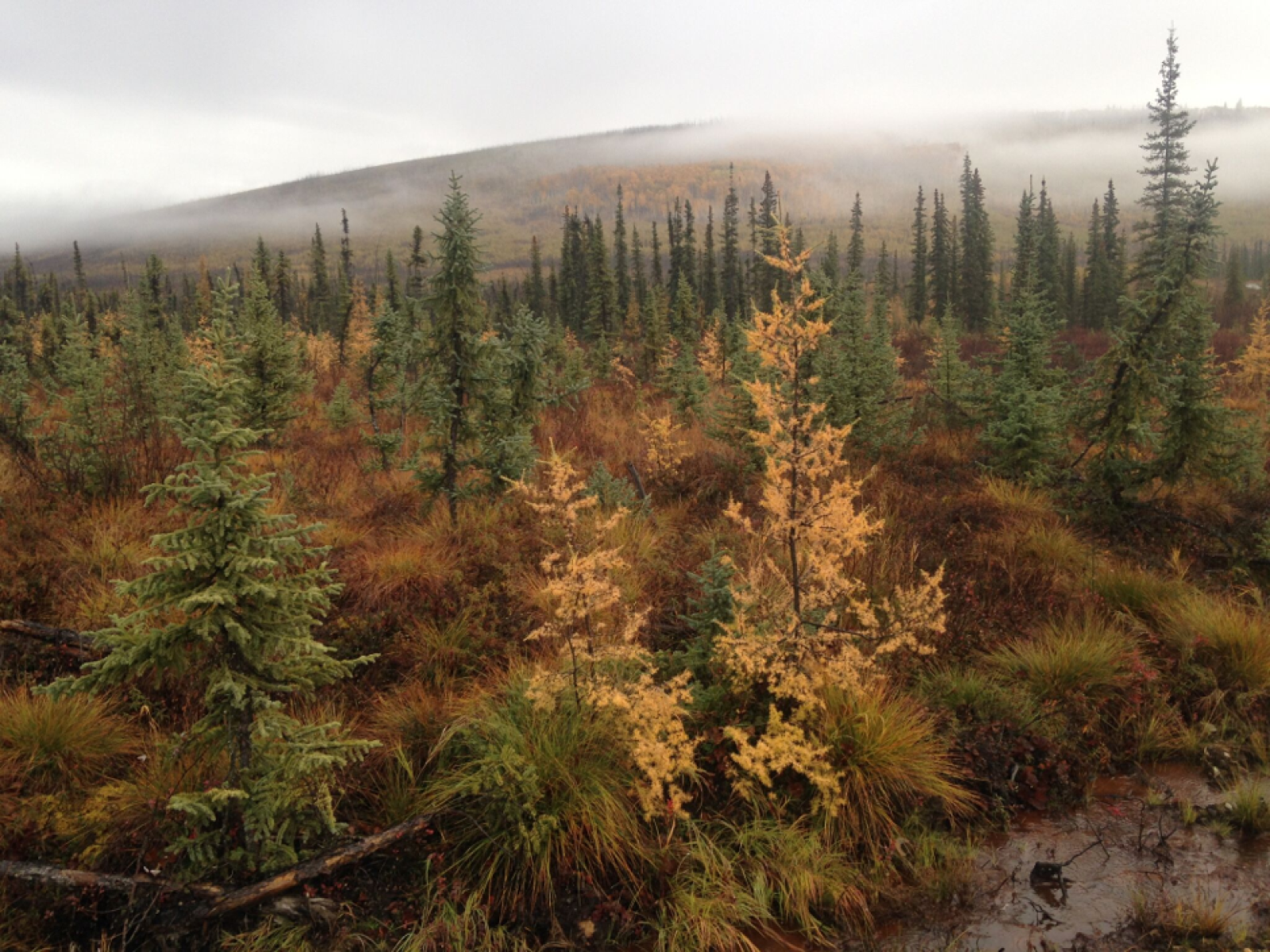Thawing Permafrost Reveals Unique RNA Virus Community
Microbes that were previously frozen in soils are becoming more active. This study reveals the new and diverse RNA viral communities found in thawed permafrost.

A picture of Alaskan permafrost environment.
(Photograph by James Stegen | Pacific Northwest National Laboratory)
The Science
Permafrost is thawing due to climate change. Microbes that were previously frozen in soils are becoming more active. Some of these are a type of virus that have ribonucleic acid (RNA) as their genetic material. Little is known about these emerging RNA viruses. This study reveals the diverse RNA viral communities found in thawed permafrost.
An experimental incubation technique was applied to mimic natural permafrost thaw and the RNA viral community was assembled from the thawed permafrost samples. The composition of the detected RNA viruses was mostly unique to the permafrost ecosystem. The RNA viruses in thawed permafrost were found to act as potential infectious agents for other organisms in the system (e.g., fungi, plants, and insects).
The Impact
As the COVID-19 pandemic raises the public awareness of RNA viruses as disease carrying microbes, it is important to understand novel RNA viruses. Climate change is causing previously frozen areas to thaw rapidly. Permafrost is a critical zone highly impacted by climate change. Permafrost has previously been shown to have active viruses with DNA as nuclear material, but little is known about RNA viruses and how thawing conditions influence RNA viral communities.
In this study, permafrost thaw conditions were mimicked during a three-month incubation period. Highly diverse RNA viral communities with members that were unique to thawed permafrost emerged in this study. Genome fragments of RNA viruses that were detected included potential pathogens to fungi, plants, and animals.
Summary
Arctic permafrost is thawing due to global warming, with unknown consequences on the microbial inhabitants or associated viruses. DNA viruses have previously been shown to be abundant and active in thawing permafrost, but little is known about RNA viruses in these systems. To address this knowledge gap, we assessed the composition of RNA viruses in thawed permafrost samples that were incubated to simulate thaw conditions. A diverse RNA viral community was assembled, including double-stranded RNA viruses and negative and positive single stranded RNA viruses.
This community was new and distinct to thawed permafrost habitat. Some of these viruses have genetic sequences corresponding to potential plant and human pathogens. The detected RNA viruses have the potential to primarily target the dominant multicellular lifeforms such as fungi, plants, and animals. The viral community structures identified were significantly associated with various host populations. These results indicate that RNA viruses are linked to host dynamics. Several of the RNA viral sequences had genes which produced proteins involved in carbon utilization. This indicates that they may have a potential role in carbon cycling in thawed permafrost.
PNNL Contact
Janet K. Jansson, Pacific Northwest National Laboratory, janet.jansson@pnnl.gov
Ruonan Wu, Pacific Northwest National Laboratory, ruonan.wu@pnnl.gov
Funding
This work was funded by Laboratory Directed Research and Development (LDRD) and Professional Development Funds at the Pacific Northwest National Laboratory. Pacific Northwest National Laboratory is a multi-program national laboratory operated by Battelle for the Department of Energy under contract DE-AC06-76RL01830.
Published: January 27, 2023
R. Wu, E. M. Bottos, V. G. Danna, J. C. Stegen, J. K. Jansson, and M. R. Davison, “RNA Viruses Linked to Eukaryotic Hosts in Thawed Permafrost”. mSystems, 7(6), e00582-22. (2022). [DOI:10.1128/msystems.00582-22].